Last week the maker of the Squishmallow teddy line took a case against Build-A-Bear, alleging that its 'Skoosherz’ product line is a rip-off of its idea.
Jazwares, which makes Squishmallows, has claimed that Shoosherz had the same "shaped fanciful renditions" of animals, that they also used "simplified Asian-style kawaii faces" (kawaii means cute, tiny and lovable in Japanese) and they had the same "velvety velour-like" fabric as Squishmallows.
But Build-A-Bear has countersued, saying that its new line is just the latest "soft, pillow-like squishie-type" toy that’s been available for years.
In other words – the idea is nothing new.
But while it seems slightly absurd to be talking about a legal battle involving adorable teddies, there is serious money on the line here.
Squishmallows have become absolutely massive hit products after appearing on social media posts by the likes of Lady Gaga and Kim Kardashian in recent years.
Many of them are now collectables, too, with a huge aftermarket for some of the more-than 1,000 varieties that exist.
It’s estimated that there was around $400m worth of Squishmallows sold last year.
In 2022 its parent company was bought by Warren Buffet’s Berkshire Hathaway for around $11.6 billion. (Though Squishmallows only made up a small part of that businesses’ entire operation)
Meanwhile Build-A-Bear's most recent company filings suggest global revenues of close to half a billion dollars.
We need your consent to load this rte-player contentWe use rte-player to manage extra content that can set cookies on your device and collect data about your activity. Please review their details and accept them to load the content.Manage Preferences
So there’s a lot on the line if one company can get a court to rule in its favour.
These are meant to be cute kids’ products – is this kind of thing normal in the toy world?
This isn’t the first time Squishmallow’s parent company has gone to court.
It unsuccessfully tried to sue TY – best known for Beanie Babies – for a line of teddies it launched a few years ago.
It’s also sought an injunction against Alibaba over alleged knock-offs that have appeared on its shopping platform.
But all of that is nothing compared to the legal drama involving Barbie.
What court battles has she had?
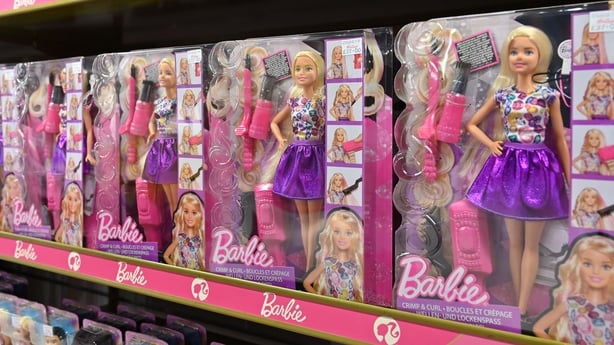
Claims of stolen ideas plagued Barbie from her inception in the 1950s, really.
The creator, businesswomen Ruth Handler, was heavily inspired by a German doll called Bild Lilli, the maker of which sued for copyright infringement just six years after Barbie debuted.
After two years of legal wrangling that case was settled out of court – and one year after that Mattel bought the copyright and patent rights for the Bild Lilli doll from its German owner.
And, of course, it then went on to dominate the doll market for decades.
Until Bratz came along.
They launched in the early 2000s and very quickly became a massive hit.
Four years after launching, they had $2 billion in sales. One year on from that, Bratz were said to have taken 40% of the ‘fashion doll’ market – with Barbie having the remaining 60%.
Mattel clearly got spooked by this. To compete it launched a doll line called MyScene, which many felt had echoes of the Bratz design.
The maker of Bratz, MGA Entertainment, thought so too and sued Mattel in 2005 – kicking off an epic legal battle between the two firms.
Shortly after MGA took its case Mattel counter-sued, claiming that the creator of Bratz had come up with the idea for the product while working at Mattel. That would have meant it was actually their idea.
And a US judge initially sided with Mattel, awarding them $100m and, perhaps more importantly, granting them the rights to Bratz.
That meant MGA had to stop marketing and selling Bratz toys – and it almost led to a global recall of the existing stock – but the decision was reversed in appeal, giving MGA control once again.
MGA then launched another case against Mattel claiming it had stolen its secrets by, amongst other things, using fake business cards to gain early access to products at a trade show.
MGA won that case and was awarded $170m – but that too was reversed on a technicality, before MGA took up another case relating to the same matter in 2014.
All of this together represented around a decade of suit and counter suit – with hundreds of millions of dollars in legal fees for both sides.
And it didn’t even end there.
MGA’s CEO Isaac Larian made a number of attempts to buy Mattel up until 2019 – and made millions from buying and selling Mattel shares, as they were falling in value.
And the rivalry between the two sides is so legendary, that some Barbie fans have even suggested there’s a kind of homage to it hidden in the recent Barbie movie.
What happened with Colin the Caterpillar?
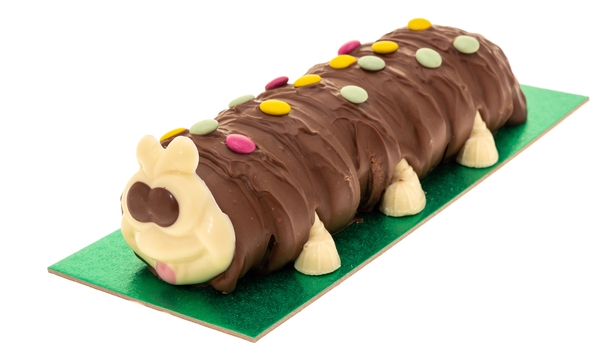
Back in 2021, M&S a claim to the British High Court relating to its Colin the Caterpillar, swiss roll-style cake.
It alleged Aldi’s Cuthbert the Caterpillar cake was infringing on its intellectual property.
What struck a lot of people at the time was the fact that there are lots of version of the caterpillar cake out there – including ones made for Tesco, Aldi and Waitrose – but M&S only seemed interested in getting legal with Aldi.
Its complaint centred on the argument that Aldi’s version was so similar to that customers might think the two were of the same quality – and the problem for M&S was that Aldi’s was cheaper.
In the end the case was settled – and some minor tweaks were made to Cuthbert so that the distinction between him and Colin were more obvious.
Aldi is no stranger to these kinds of cases, is it?
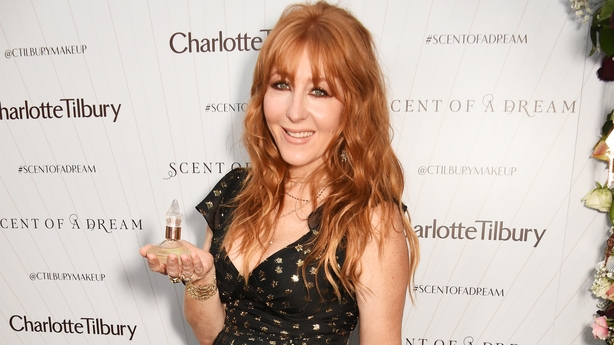
No, it’s had a few legal skirmishes.
At the heart of Aldi’s business model is its own brand versions of popular products - and part of the way it attracts and retains customers is by making sure they know what their items are an alternative to.
That means the goods need to be familiar – but also distinct enough that they stand on their own as well.
And generally Aldi gets that balance right – but sometimes companies cry foul.
Its Australian arm is currently facing a claim from a kids’ snack maker that it’s copied its look, for example.
Meanwhile, back in 2018 Aldi launched a makeup palette which bore a striking resemblance to a product by Charlotte Tilbury.
The big difference was that the Aldi version cost close to 90% less than the Charlotte Tilbury one.
Tilbury’s company sued and ultimately won – because they could show that Aldi was aware of its designs first and foremost, and that its palette was too similar looking to Tilbury’s to argue that it was just a coincidence.
Does the fashion world get a lot of these cases?
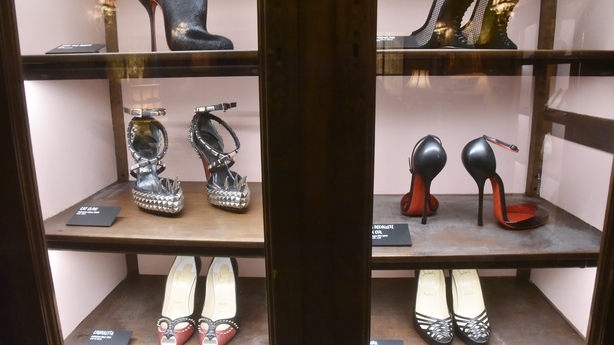
Yes – there seems to be a constant stream of them.
In fact it would be difficult to find a fashion retailer of any scale that hasn’t faced multiple claims of ripping off rivals.
Sometimes it’s over the alleged theft of some innovation.
Nike has sued New Balance and Skechers for patent infringement, for example.
Crocs sued Skechers too – and that was settled with Skechers agreeing not to sell certain types of molded products.
But often the cases are based around alleged copying of a pattern or design. That is a little bit harder to pin down because ultimately they’re all working with similar materials, shapes and colours.
Despite that we’ve had Gucci suing Guess – in part that row was over the use of the letter ‘G’ on products – but there were also some specific designs Gucci said Guess copied. That row was settled after nine years.
Victoria Secret has been sued by a number of smaller lingerie brands – with some claiming as part of their evidence that they had received orders from people with the same name as senior Victoria Secret staff members, with the delivery going to their headquarters.
Christian Louboutin has been very protective of its red sole trademark – it took a case against YvesSaintLauren which ended with an agreement that the latter could make an entirely red show where the sole was also red, but if the shoe had any other colour it would be a copyright infringement.
The Hells Angels also successfully sued Alexander McQueen for his use of their ‘death head’ symbol – a side profile of a skull with wings – on a piece of jewellery he made.
Here in Ireland about a decade ago Karen Millen accused Dunnes Stores of stealing some of its designs. That case ultimately went as far as the European Court of Justice.
But the big problem for designers today today are accusation of widespread theft on online retail platforms – with creators pointing the finger at the likes of Shein, Alibaba, Temu and even Amazon.
A big part of the problem is that these copycats are often automated or semi-automated – so they see out products that are doing well and then start selling them side-by-side, possibly for less than what was originally being charged.
What about a copy-cat tattoo?
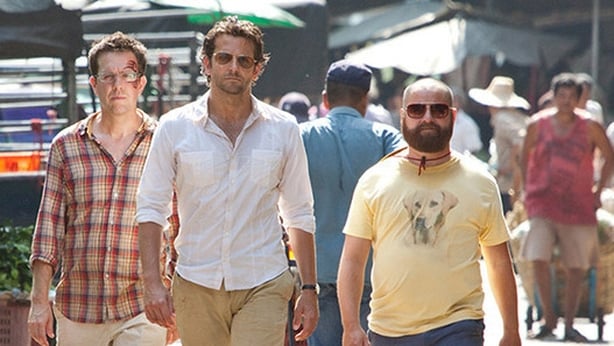
Copying someone’s tattoo is generally frowned upon in the industry; after all, that has been drawn or designed by someone, specifically for a customer.
So if you go in with a picture of someone else’s tattoo and ask them to re-create it, a reputable tattoo artist will say ‘no’.
But the issue around tattoo copying was taken to the extreme in 2011, when tattoo artist Victor Whitmill sought to block the release of The Hangover 2.
Whitmill was the artist behind Mike Tyson’s infamous tribal face tattoo – and in the film one of the characters gets the same tattoo on his face. Whitmill said that amounted to them copying his work.
And the case posed a number of curious questions.
Mike Tyson appeared in the film, indicating he was okay with the use of his tattoo… but, it turned out, it wasn’t his design to give or revoke permission around. That also meant there was a situation where someone other than Mike Tyson held the rights to the thing that was on Mike Tyson’s face.
Another problem was that Warner Brothers had spent around $80m promoting the film by the time the case was lodged – and there was a chance it could be blocked from release, and that even future DVD releases would be barred.
In the end it wasn’t blocked, though, and the two sits reached an ‘amicable’ agreement.
The film got its release, with the tattoo gag remaining, meaning Whitmill likely got fairly compensated for the film’s use of his intellectual property.







